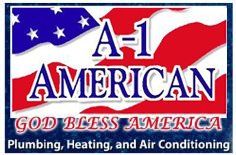Call Us Today! Southside:
(757) 425-2400
| Peninsula : (757) 595-9900 | Williamsburg: (757) 565-1900
Blower Motor Replacement
Blower Motor replacements
Blower Motor Definition
A blower motor is the component within a home’s HVAC system. The motor blows heated air through vents when the heating system is in use. Conversely, some blower motors blow cold air when the air conditioning system is in use. There are two main types of blower motors: single-speed motors and variable-speed motors. Single-speed blower motors blow air at one speed. Variable-speed motors adjust their speed to blow air at varying speed levels. A properly functioning blower motor remains a critical component of your home’s HVAC system. The blow motor is vital in maintaining a comfortable temperature within your home.
It is never a waste of time to clean it, the evaporator coil provides cool air and the blower then moves the air. Without a clean and working blade it doesn’t work to its max and ends up wasting energy. The blower motor is located inside the central air conditioning unit.
How A Blower Motor Works
Thermostats work with the home heating and cooling systems to monitor the temperature. When the temperature drops below the thermostat setting, it signals the furnace to get to work. The furnace creates hot (or cold) air, which then needs to circulate around the various rooms of your home. This is when the blower motor engages.
A blower motor takes the heated or cooled air created within the furnace and circulates it throughout the home in order to ensure the temperature reaches what’s called for on the thermostat. It does this by spinning a fan, which blows the air through the ventilation system of your home. Even a small blower motor can move a large volume of air.
Single-speed motors operate at one speed, and full energy capacity when in use. The thermostat tells your blower motor when to turn on and off. Occasionally, single-speed motors result in cold spots because they only run when signaled by the thermostat. Conversely, variable-speed motors blow air higher and lower speeds, when desired. Therefore, this motor helps create a more evenly distributed temperature throughout your home. Plus, variable-speed motors are typically more energy efficient than a single-speed motor, which helps save on your monthly energy bills.
Choosing A Blower Motor
When choosing a replacement blower motor for your furnace, it’s best to get an exact replacement unit. You can do this by finding the serial number on your blower motor and checking with the manufacturer to see if they have one available. If a replacement is not available, you can usually find a universal model that is compatible with your furnace. You will need to account for: type of drive, motor diameter, voltage, horsepower, speeds, rotation direction, size of the run capacitor (if required), and mounting method when shopping for a replacement blower motor.
A qualified HVAC professional remains the best person to help you install the correct blower motor for your home.
Call today 757-425-2400
Central air conditioning units will have different blower speeds for heating and cooling air. It takes more energy to move cold air than hot, so there’s a different speed for it.
There are four parts to a blower:
- Compressor replacement
- Freon recharge
- Thermostat replacement
- Drain line flush
- Filter change
- Complete HVAC replacement
- The Housing
- Belly Band Mount
- The Wheel
- The Motor
Blower Motor Maintenance
One of the most hard-to-miss signs that your blower motor is no longer working is that your furnace is constantly running, but the house still feels cool. By properly maintaining your furnace’s blower motor, you can ensure your family’s year-round comfort. Before each heating season, clean the fan blades, check the motor belt for wear and tear and adequately lubricate the motor.
Even with proper maintenance, there are some issues that can still cause your blower motor to stop working. For example, common issues involve the resistor, fan relay and climate control switches. However, an experienced HVAC professional evaluates and fixes any issues with these components.
Blower motor failure also derives from a bearing wearing out, the motor breaking or wearing out, or the fan cage becoming obstructed.
However, routine maintenance, such as regular cleaning prevents the motor from becoming dirty. Frequently, furnaces reside in basements and laundry rooms. Therefore, dirt and even small lint particles often make their way into the motor, causing burnouts. Also, dirt buildup or debris falling down the ventilation system often cause obstruction of the blower motor fan cage.
Keeping the blower motor fan cage clean is essential to ensure proper operation of your HVAC system. This can easily be completed by a qualified HVAC professional and should be part of your regular annual furnace maintenance.











Three Locations to Serve You!
Norfolk, Virginia Beach
In VA Beach, Suffolk, Chesapeake, Portsmouth and Norfolk, VA:
VIRGINIA BEACH OFFICE
1620 Centerville Tpke., Ste. 113
Virginia Beach, VA 23464
(757) 425-2400
Services available 24/7!
Virginia Beach/Southside
1620 Centerville Turnpike, Ste. 116
Virginia Beach, VA 23464
Phone: (757) 425-2400
Peninsula
11838 Rock Landing Dr., Ste. 125
Newport News, VA 23606
Phone: (757) 595-9900
Williamsburg
Phone: (757) 565-1900
Copyright 2025 A-1 American Services | Privacy policy | About Us on the Web
